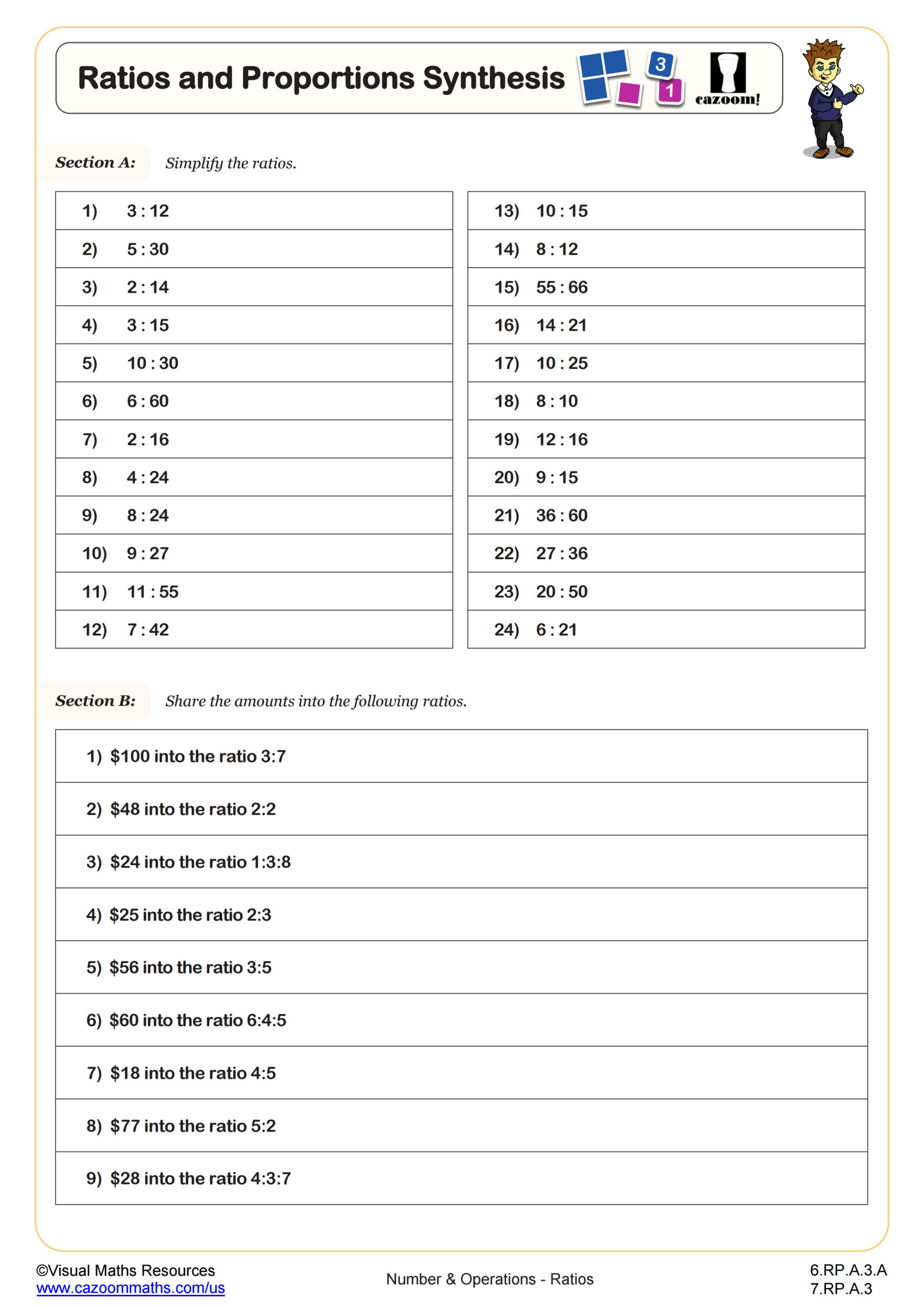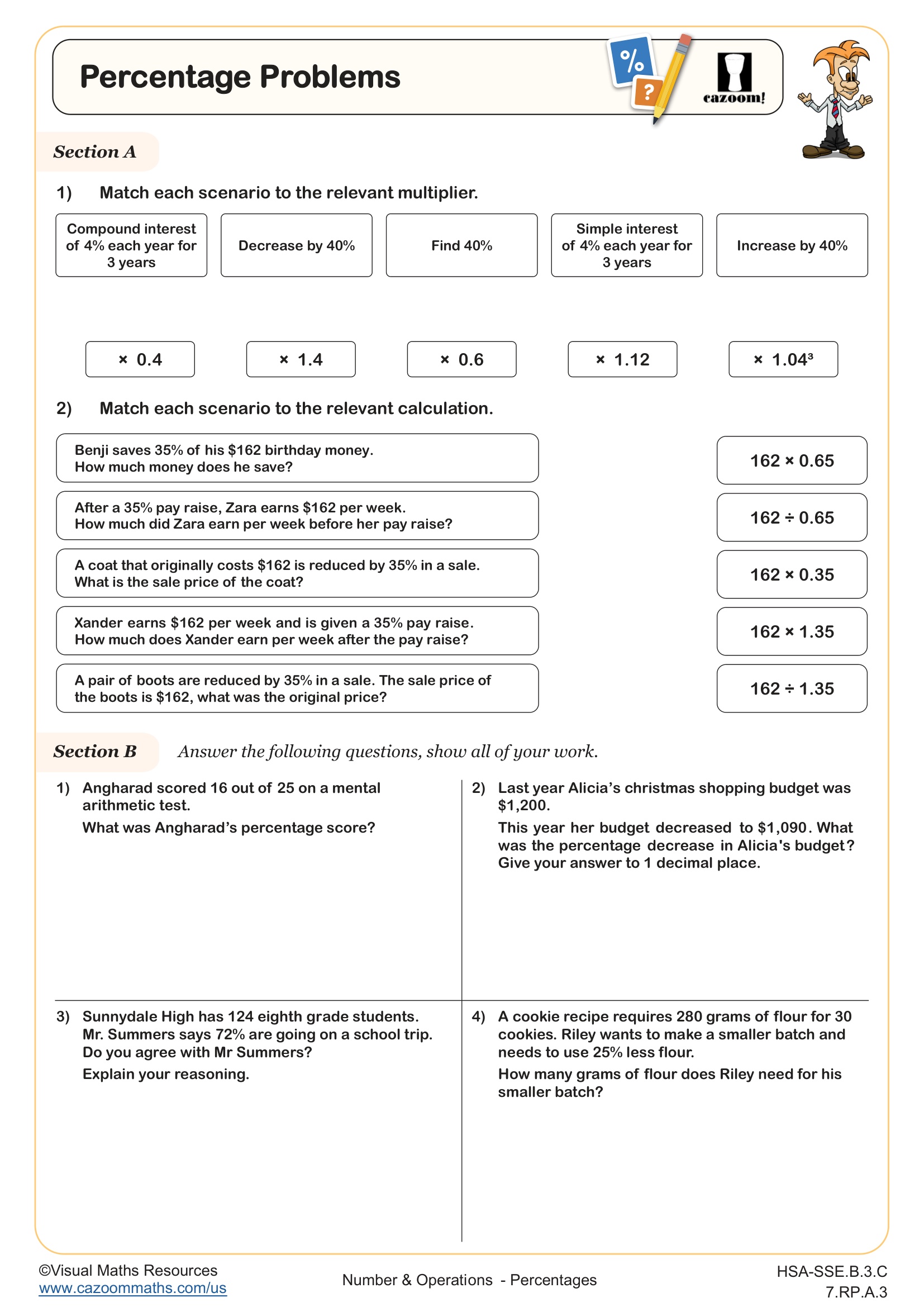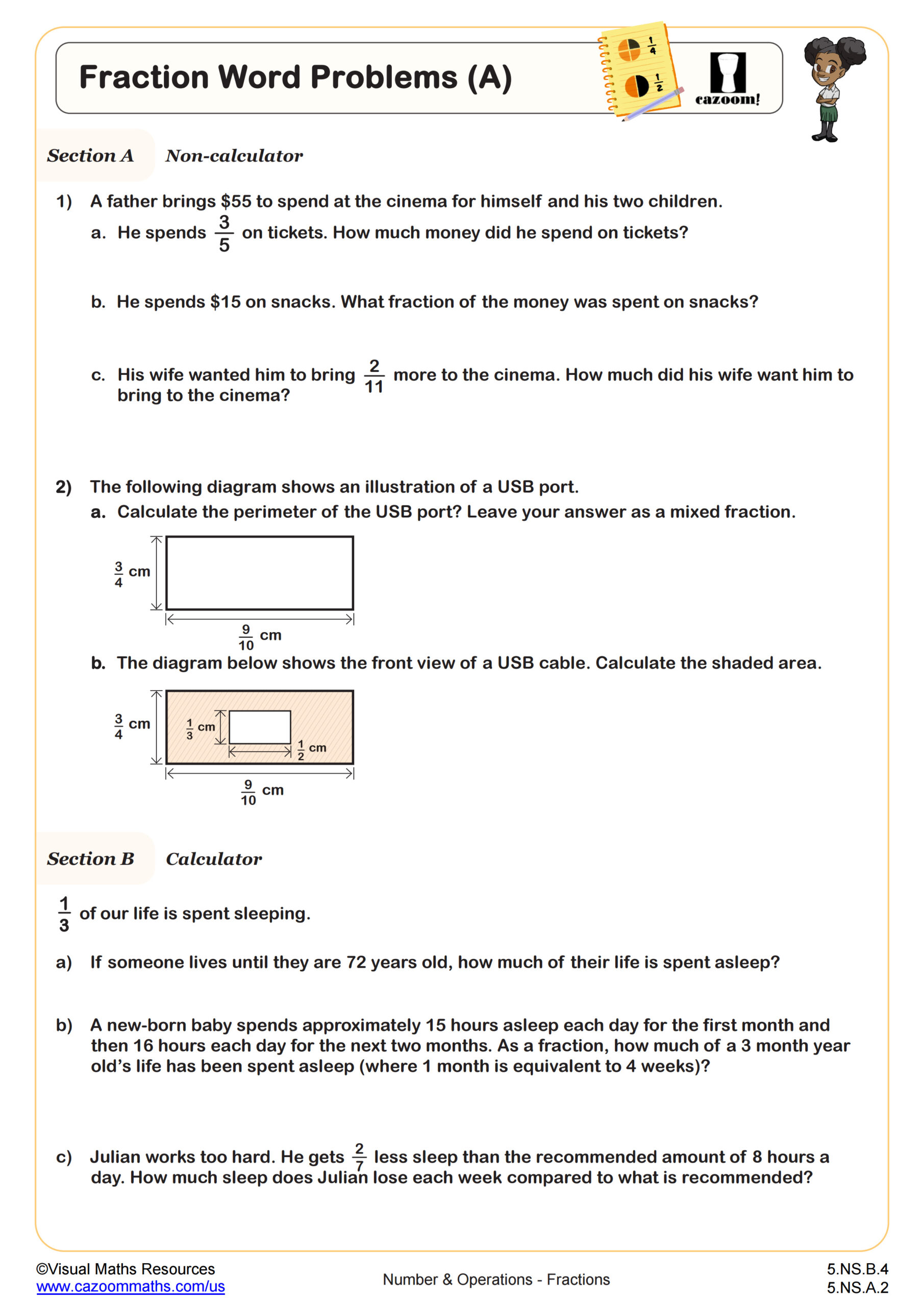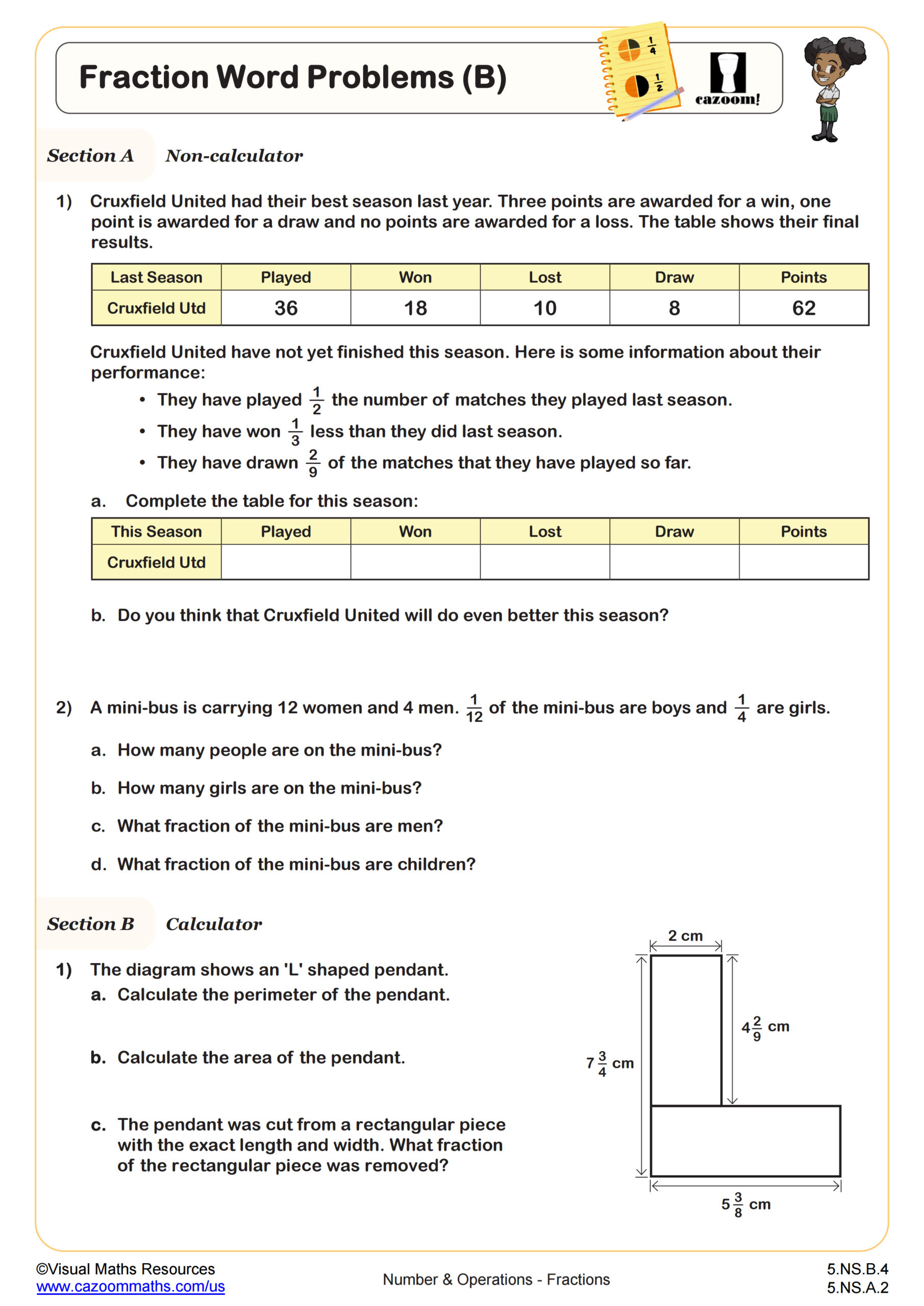Fraction, Percentage and Ratio Problems WORKSHEET
Use proportional relationships to solve multistep ratio and percent problems, including simple interest, tax, markups and markdowns, gratuities and commissions, fees, percent increase and decrease, and percent error.
Fraction, Percentage and Ratio Problems WORKSHEET DESCRIPTION
This worksheet focuses on tackling problems that involve working with fractions, percentages, and ratios. These types of questions are very common in GCSE exams, and students studying either the foundation or higher tier curriculum will frequently encounter scenarios like these.
Learners will warm up by recapping how to find fractions and percentages of amounts, and how to share amounts into given ratios in Section A, by answering 9 quick questions.
Section B then consists of six problem-solving questions where the above skills are combined. Questions 5 and 6 are slightly different and require students to find a whole when given a fractional amount, and to find one part of a ratio when given another.
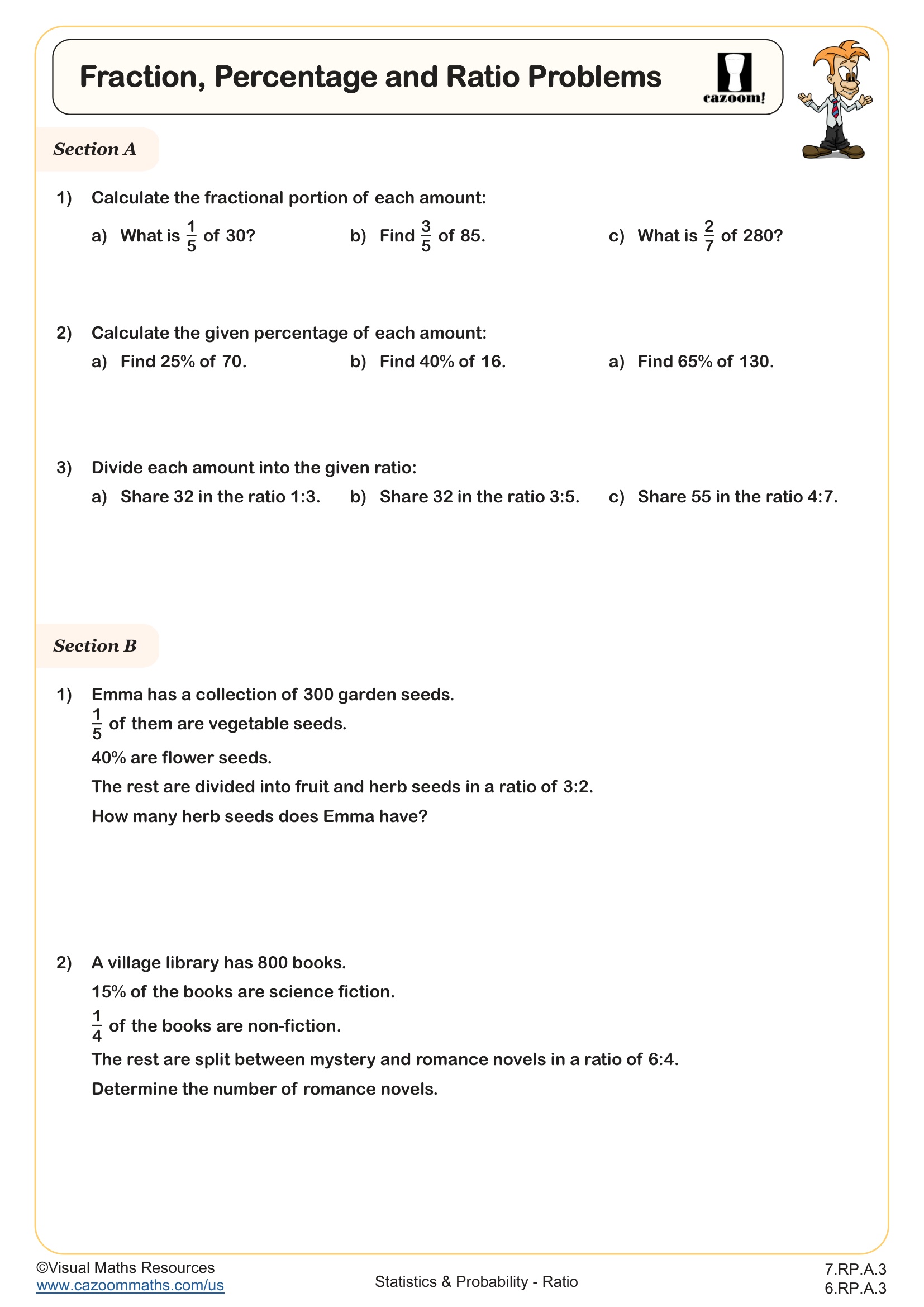
RELATED TO Fraction, Percentage and Ratio Problems WORKSHEET
Frequently Asked Questions
This fraction, percentage and ratio problems worksheet is designed for students in 6th Grade and 7th Grade and aligns with Common Core State Standards.
